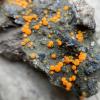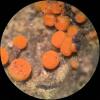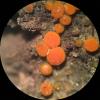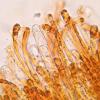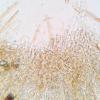
10-08-2025 11:40
 Zuzana Sochorová (Egertová)
Zuzana Sochorová (Egertová)
Hello, would you agree here with the identificati

09-08-2025 17:52
Henri KoskinenHello, would you say this is Peziza or Pachyella?

31-07-2025 16:32
 Andreas Gminder
Andreas Gminder
Dear collegues,today I found on a very fresh fire

12-02-2012 11:31
 Hans-Otto Baral
Hans-Otto Baral
Hi allI am quite sure that nobody has a pdf of thi

02-08-2025 12:35
 éric ROMERO
éric ROMERO
Bonjour tous, J'ai trouvé sur pétiole de Fraxin

02-08-2025 17:21
 Andgelo Mombert
Andgelo Mombert
Bonjour,Je recherche la description et la planche

30-07-2025 20:52
Bohan JiaHi together, I've been looking posts in AscoFra

30-07-2025 10:12
 Bernard CLESSE
Bernard CLESSE
Bonjour à toutes et tous,Pourriez-vous m'aider à

30-07-2025 18:06
Stefan JakobssonOn a decorticated twig of Alnus incana on moist so
Byssonectria (?) Pyronemataceae from Eastern US
Ethan Crenson,
23-04-2024 21:49
Hello all,
A friend recently found this orange asco on bare earth in a New York City park. The apothecia are orange, turbanate, sessile growing without an apparent mycelial mat on a muddy tire rut. The largest is 1.5 mm in diameter. They sometimes have a faint white marginal zone.
The apothecia are unfortunately immature. I am unable to find many ejected spores. The spores in ascus are broadly ellipsoid, smooth and small. The few I was able to measure out of the asci were approximately 9-10 x 5-6µm.
The few asci present are IKI-. Paraphyses are enlarged at the tips and contain orange pigments which stain green in IKI.
In the field I thought this might be Ramsbottomia, but the microscopy shows that it is obviously not. My next thought was Byssonectria, but the Pfister paper Synopsis of the North American Species of Byssonectria contains nothing with spores this shape and size. Byssonectria deformis, in Zotto's folder, has broadly ellipsoid spores, but much larger and it also appears to be restricted to Europe, from what I can tell.
Can anyone help with this asco?
Thank you in advance,
Ethan
Uwe Lindemann,
23-04-2024 22:23
Re : Byssonectria (?) Pyronemataceae from Eastern US
Hello Ethan,
yes, I would agree that it is a species of the genus Byssonectria. The macroscopic appearance is very typical. As for the ascospores, they look immature to me. Perhaps you should wait a few more days and then examine the ascomata again?
Best, Uwe
Ethan Crenson,
23-04-2024 22:26
Re : Byssonectria (?) Pyronemataceae from Eastern US
Thank you for your comments, Uwe. Is it possible that over the course of a few days the spores will become more fusiform in shape and grow to the size of typical North American species? They seem so different.
Uwe Lindemann,
23-04-2024 22:34
Re : Byssonectria (?) Pyronemataceae from Eastern US
No, I don't think they will become fusiform.
Best, Uwe
